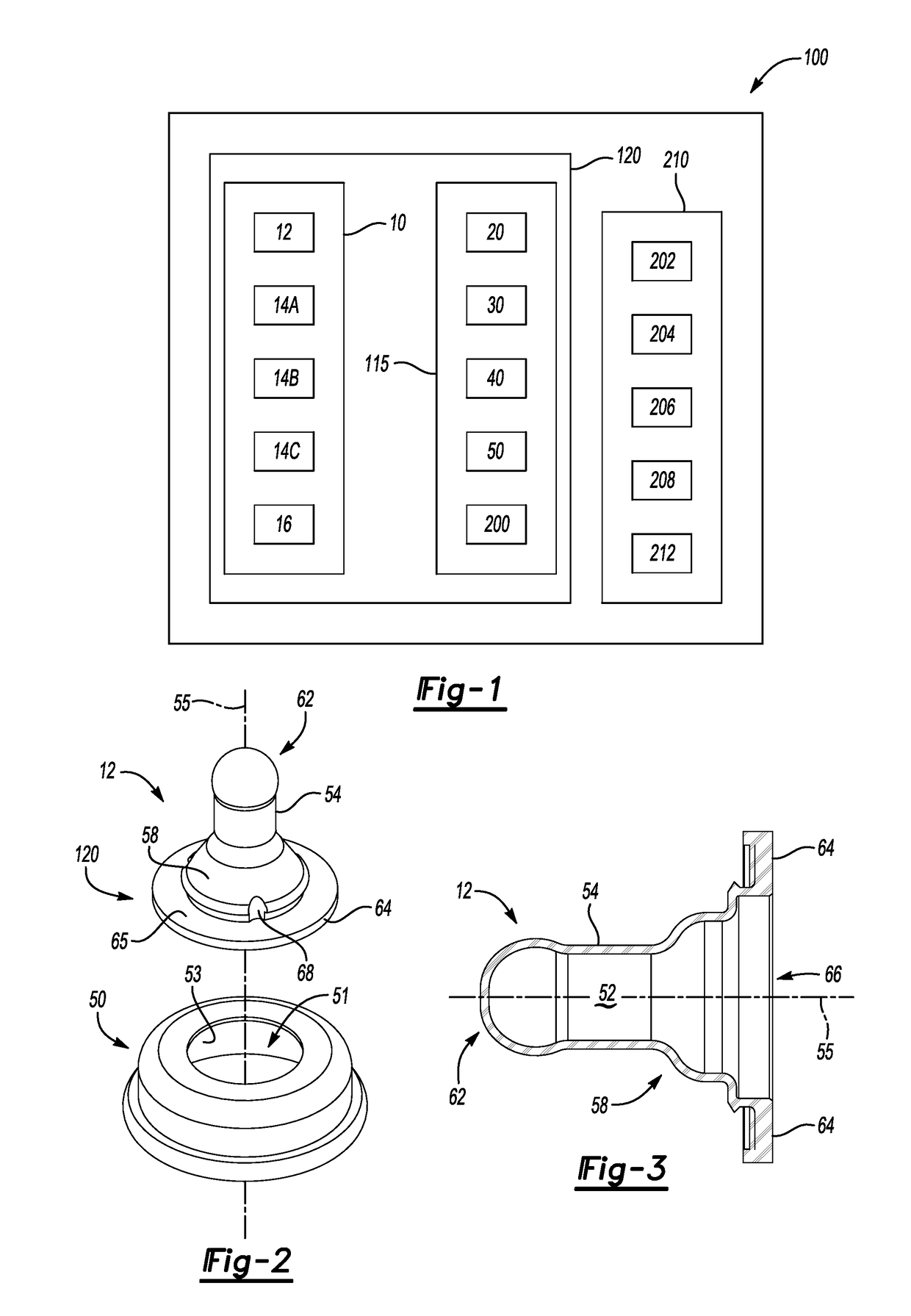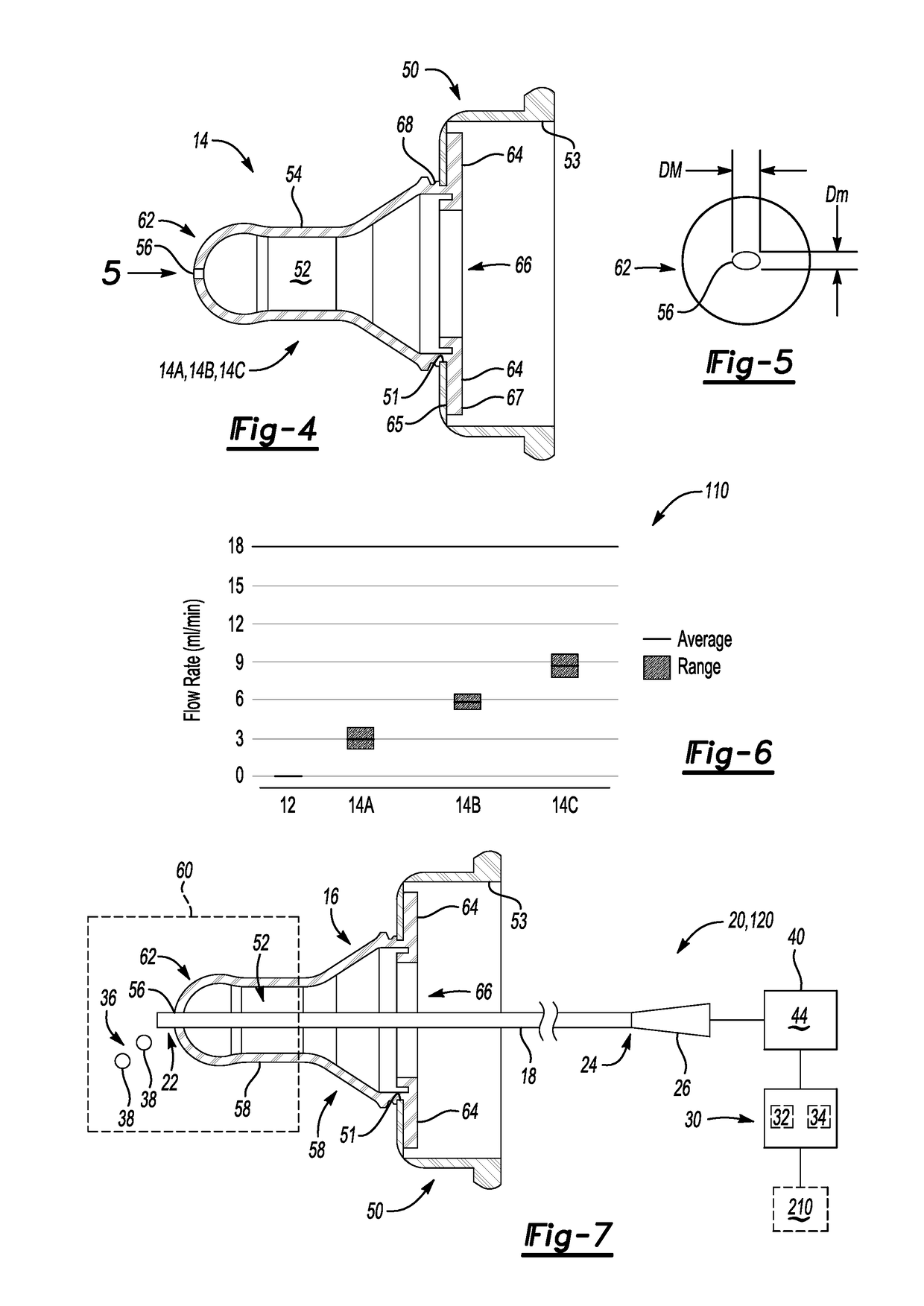Feeding transition nipple mechanism and system
a transition system and nipple technology, applied in the field of feeding transition system, can solve the problems of poor weight gain and growth, interfere with the infant's ability to adapt, and increase the risk of associated morbidities, so as to and facilitate the transition of infants to oral feeding.
- Summary
- Abstract
- Description
- Claims
- Application Information
AI Technical Summary
Benefits of technology
Problems solved by technology
Method used
Image
Examples
Embodiment Construction
[0040]Providing consistent environmental factors and feeding constructs to an infant can help with the ease of transition of the infant to self-sustained oral feeding. Provided herein are a feeding transition nipple mechanism 120 and system 100 shown in FIG. 1, and a method 105 of use shown in FIG. 18, for transitioning an infant to oral feeding. Referring to the drawings wherein like reference numbers represent like components throughout the several figures, the elements shown in FIGS. 1-18 are not necessarily to scale or proportion. Accordingly, the particular dimensions and applications provided in the drawings presented herein are not to be considered limiting. Referring now to FIG. 1, shown is a feeding transition system 100 including a set of nipples 10, also referred to herein as a nipple set, for use in transitioning an infant subject 60 (see FIGS. 7 and 15) to oral feeding using one or more of the nipples 12, 14A, 14B, 14C, 16 of the nipple set 10, using the method 105 show...
PUM
 Login to View More
Login to View More Abstract
Description
Claims
Application Information
 Login to View More
Login to View More - R&D
- Intellectual Property
- Life Sciences
- Materials
- Tech Scout
- Unparalleled Data Quality
- Higher Quality Content
- 60% Fewer Hallucinations
Browse by: Latest US Patents, China's latest patents, Technical Efficacy Thesaurus, Application Domain, Technology Topic, Popular Technical Reports.
© 2025 PatSnap. All rights reserved.Legal|Privacy policy|Modern Slavery Act Transparency Statement|Sitemap|About US| Contact US: help@patsnap.com



